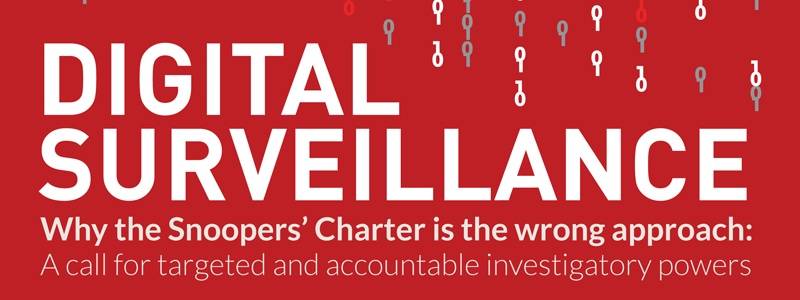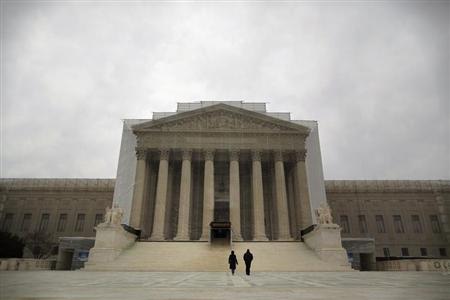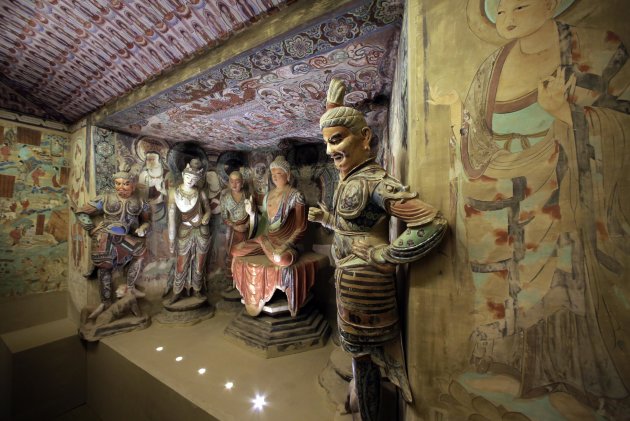
Colonel John Ashley House, Sheffield, Massachusetts.
Eighty
years before the Emancipation Proclamation freed American slaves, a
Massachusetts woman helped free the slaves of that state … just by going
to court.
BRAVE WORDS
In 1773 the
leading citizens of Sheffield, Massachusetts, met in the home of Colonel
John Ashley and drafted the document that some historians have called
America's first Declaration of Independence, the Sheffield Declaration.
"Mankind in a state of nature are equal, free, and independent of each
other," it stated, "and have a right to the undisturbed enjoyment of
their lives, their liberty, and property."

Ironically,
as the men toiled over the document, which protested English tyranny,
they were waited on by Betty Freeman (also called Elizabeth, or Bett),
Colonel Ashley's slave. He'd bought several slaves when they were only
babies, and they'd been held in involuntary servitude ever since.
Freeman
overheard the repeated talk of liberty as the men drafted the Sheffield
Declaration. She heard more of the same three years later, when Ashley
and his associates discussed the Declaration of Independence, which
stated, "we hold these truths to be self-evident, that all men are
created equal, that they are endowed by their Creator with certain
inalienable Rights, that among these are Life, Liberty, and the pursuit
of Happiness." She got an earful in 1780, when Ashley and his friends
mulled over the new Massachusetts constitution, which proclaimed that
"all men are born free and equal, and have the right of enjoying and
defending their lives and liberties."
ALL TALK
These
were noble words, but none of them were meant to apply to Freeman -not
even after her husband, also a slave, gave his life fighting on the
American side during the Revolutionary War. Born into slavery, Betty,
her sister, and all their descendants would live in slavery forever if
Colonel Ashley and others like him had their way.
THE "LADY" OF THE HOUSE
As
deeply as she resented her lack of freedom, Betty got along with
Colonel Ashley. Not so with his wife, Hannah, a petty tyrant who cruelly
beat her slaves over the tiniest transgression. Once, when she had
caught Betty's sister, Lizzie, eating leftover scraps of bread dough,
Mrs. Ashley accused her of "stealing" food and swung at her with a hot
shovel pulled from the fireplace. Betty blocked the blow intended for
her sister and received a gash on her arm that cut all the way to the
bone. She carried that scar for the rest of her life.

It
wasn't long after that incident that Freeman happened to visit the
village meeting house while the Declaration of Independence was being
read aloud. Maybe it was the fresh wound on her arm, maybe it was
hearing the words of equality and freedom spoken one more time …whatever
it was, something clicked inside her. The next day, she left the
Ashleys and walked over to the offices of Theodore Sedgwick, a lawyer
and vocal opponent of slavery. Freeman knew him because he was one of
the people who had helped draft the Sheffield Declaration.
"Sir,"
she asked, "I heard that paper read yesterday, that says all men are
born equal, and that every man had a right to freedom. I am not a dumb
critter; won't the law give me my freedom?"
EQUAL = EQUAL
Wouldn't
it? How could a state that proclaimed "all men are born free and equal"
and was part of a country that believed "all men are created equal"
reconcile these statements with the institution of slavery? Sedgwick
agreed with Freeman: It couldn't. He decided to help her by filing a
lawsuit to win her freedom, on the grounds that the language of the new
state constitution made slavery illegal.
The laws of
Massachusetts at the end of the 18th century were quite peculiar by
modern standards: They defined slaves as property, but also recognized
that they are human beings, which meant that they had legal standing in
state courts and could file lawsuits. In recent years a number of slaves
had sued for their freedom and won, but not by challenging the legality
of slavery directly. If a slave could prove that their mother had been
born free, they could regain their freedom. Likewise, if a slave owner
had made a promise to free a slave and then reneged, the slave could sue
on the grounds of breach of promise. Freeman's lawsuit was different:
It would be the first to challenge the legality of slavery itself.
SEE YOU IN COURT
The
new state constitution had been in effect for less than a year when
Sedgwick went to court in May 1781 and filed what was called a "writ of
replevin." The writ ordered Colonel Ashley to surrender property -Betty
and another slave, Brom, who had joined the suit- that wasn't rightfully
his. When Ashley refused to obey the writ, a trial was scheduled for
the following August.
Colonel Ashley probably didn't realize it
at the time, but the odds were against him from the start. Although
slavery was still legal in Massachusetts, it had become very unpopular.
The case was going to be tried before a jury, at a time when citizens of
Massachusetts were still fighting in the Revolutionary War. These
people took their freedoms seriously. And sure enough, when the trial
was over, the jury decided in favor of Betty and Brom. The court set
both of them free and ordered Ashley to pay them 30 shillings in
damages, plus court costs.
THE BEGINNING OF THE END
Brom and Bett v. Ashely
was a lower court case and did not set much of a precedent -Brom and
Betty were the only slaves freed by the decision. But it did set a
precedent of another kind, demonstrating that if slaves went to court to
win their freedom, juries were very likely to give it to them. Slavery
began to die a death of a thousand cuts in Massachusetts as other slaves
filed lawsuits or just walked away from their owners, knowing that the
owners couldn't turn to the law for assistance. Owning slaves in the
state had suddenly become a very risky business.
Another nail in
slavery's coffin came as the result of a second lawsuit, filed in 1781
by a slave named Quock Walker, who sued his owner in civil court for
assault and battery after the owner beat him for trying to escape.
Walker not only won the case and £50 in damages, but the attorney
general prosecuted his owner on
criminal charges of assault and battery. The case went all the way to the Supreme Judicial C

ourt,
the state's highest court. Once again the jury sided with the slave, by
finding his owner guilty and fining him 40 shillings.
Chief
Justice William Cushing's instructions to the jury turned out to be even
more important than their decision. He stated that "perpetual servitude
can no longer be tolerated in our government; and …liberty can only be
forfeited by criminal conduct or relinquished by personal consent."
Cushing's words weren't legally binding but they may as well have been
-they made it clear that the court was against slavery. Without the
protection of the law, slavery was doomed in Massachusetts.
AFTERMATH
Theodore
Sedgwick, the lawyer who had helped Betty Freeman, went on to an
illustrious career in politics and law. He served in both houses of
state government, as well as in the U.S. Senate and House of
Representatives, where he was Speaker of the House from 1799 to 1801. In
1802 he became a justice of the Supreme Judicial Court of
Massachusetts, and served there until his death in 1813.

What
happened to Brom is unknown; after the case ended he disappeared into
history. We do know what happened to Betty, however. After Colonel
Ashley lost the case, he asked Betty to come back and work for wages.
Would you have accepted such an offer? Neither did Betty -she went to
work for Theodore Sedgwick instead. After many years, she saved enough
money to buy her own house and retire. When she died in 1829 at about
the age of 85, she was buried in the Sedgwick family plot in
Stockbridge, Massachusetts, where her grave can still be seen today. One
of her great-grandchildren was W.E.B. DuBois, one of the most important
civil rights leaders of the 20th century.
THE MEANING OF FREEDOM
Many
years after Betty's death, Theodore Sedgwick's daughter Catherine
recounted Betty's explanation of what freedom meant to her: "Any time
while I was a slave," she said, "if one minute's freedom had been
offered to me, and I had been told that I must die at the end of the
minute, I would have taken it just to stand one minute on god's earth as
a free woman."





 Colonel John Ashley House, Sheffield, Massachusetts.
Colonel John Ashley House, Sheffield, Massachusetts.
 Ironically,
as the men toiled over the document, which protested English tyranny,
they were waited on by Betty Freeman (also called Elizabeth, or Bett),
Colonel Ashley's slave. He'd bought several slaves when they were only
babies, and they'd been held in involuntary servitude ever since.
Ironically,
as the men toiled over the document, which protested English tyranny,
they were waited on by Betty Freeman (also called Elizabeth, or Bett),
Colonel Ashley's slave. He'd bought several slaves when they were only
babies, and they'd been held in involuntary servitude ever since.  It
wasn't long after that incident that Freeman happened to visit the
village meeting house while the Declaration of Independence was being
read aloud. Maybe it was the fresh wound on her arm, maybe it was
hearing the words of equality and freedom spoken one more time …whatever
it was, something clicked inside her. The next day, she left the
Ashleys and walked over to the offices of Theodore Sedgwick, a lawyer
and vocal opponent of slavery. Freeman knew him because he was one of
the people who had helped draft the Sheffield Declaration.
It
wasn't long after that incident that Freeman happened to visit the
village meeting house while the Declaration of Independence was being
read aloud. Maybe it was the fresh wound on her arm, maybe it was
hearing the words of equality and freedom spoken one more time …whatever
it was, something clicked inside her. The next day, she left the
Ashleys and walked over to the offices of Theodore Sedgwick, a lawyer
and vocal opponent of slavery. Freeman knew him because he was one of
the people who had helped draft the Sheffield Declaration.  ourt,
the state's highest court. Once again the jury sided with the slave, by
finding his owner guilty and fining him 40 shillings.
ourt,
the state's highest court. Once again the jury sided with the slave, by
finding his owner guilty and fining him 40 shillings.  What
happened to Brom is unknown; after the case ended he disappeared into
history. We do know what happened to Betty, however. After Colonel
Ashley lost the case, he asked Betty to come back and work for wages.
Would you have accepted such an offer? Neither did Betty -she went to
work for Theodore Sedgwick instead. After many years, she saved enough
money to buy her own house and retire. When she died in 1829 at about
the age of 85, she was buried in the Sedgwick family plot in
Stockbridge, Massachusetts, where her grave can still be seen today. One
of her great-grandchildren was W.E.B. DuBois, one of the most important
civil rights leaders of the 20th century.
What
happened to Brom is unknown; after the case ended he disappeared into
history. We do know what happened to Betty, however. After Colonel
Ashley lost the case, he asked Betty to come back and work for wages.
Would you have accepted such an offer? Neither did Betty -she went to
work for Theodore Sedgwick instead. After many years, she saved enough
money to buy her own house and retire. When she died in 1829 at about
the age of 85, she was buried in the Sedgwick family plot in
Stockbridge, Massachusetts, where her grave can still be seen today. One
of her great-grandchildren was W.E.B. DuBois, one of the most important
civil rights leaders of the 20th century.  Austerity is having a devastating effect on health in Europe and
North America, driving suicide, depression and infectious diseases and
reducing access to medicines and care, researchers have said.
Detailing a decade of research, Oxford University's David Stuckler and
Sanjay Basu, from Stanford University, said their findings show
austerity is seriously bad for health it is reported by RTE News.
Austerity is having a devastating effect on health in Europe and
North America, driving suicide, depression and infectious diseases and
reducing access to medicines and care, researchers have said.
Detailing a decade of research, Oxford University's David Stuckler and
Sanjay Basu, from Stanford University, said their findings show
austerity is seriously bad for health it is reported by RTE News.












 (Photo: Joshua Bright for The New York Times)
(Photo: Joshua Bright for The New York Times)







 Parasite 'resistant to malaria drug'
Parasite 'resistant to malaria drug'






